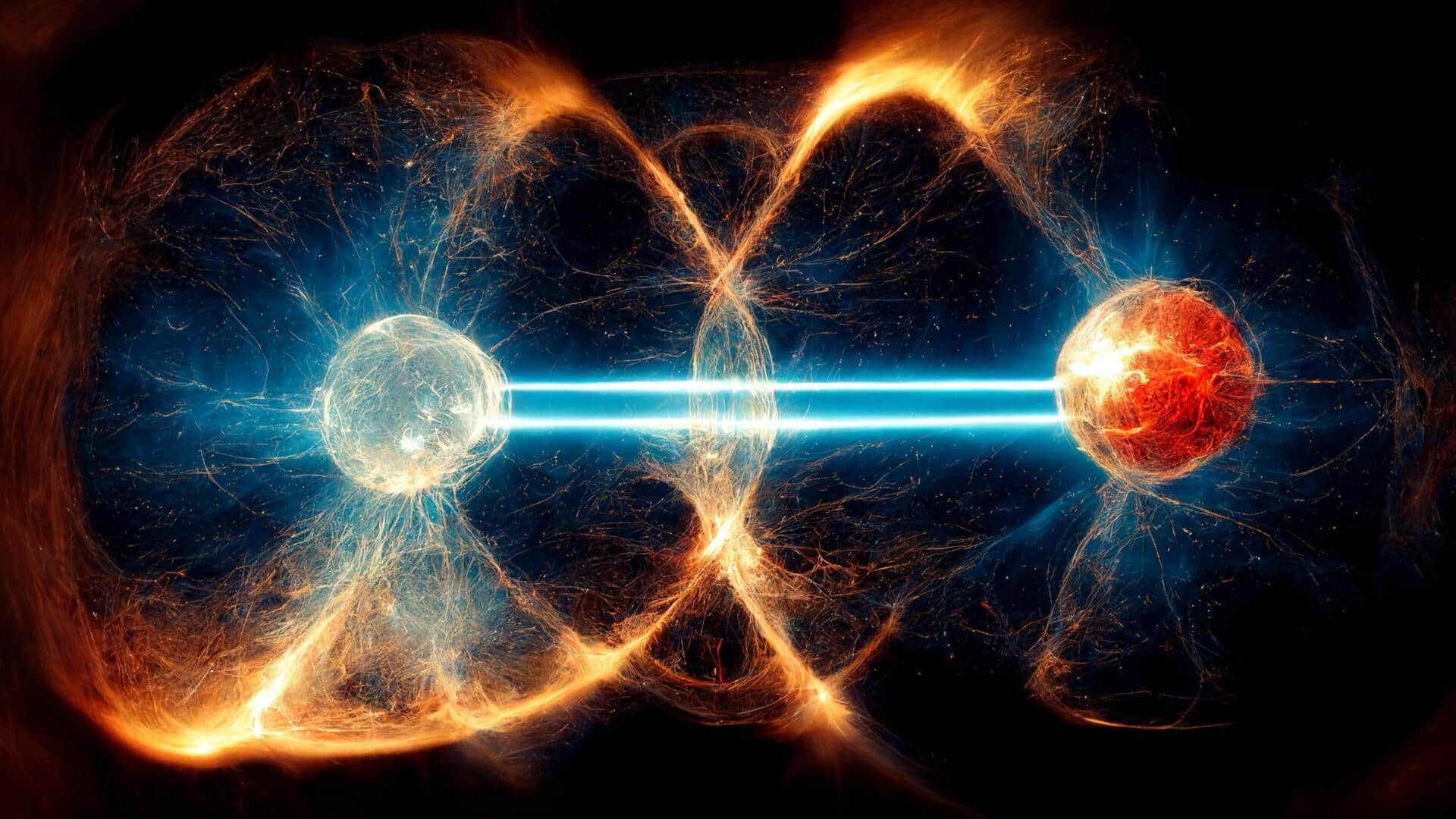
Scientists discover new method to entangle light and sound particles
What's the story
Scientists from the Max-Planck-Institute (MPL) for the Science of Light have proposed a new way to entangle optical photons - particles responsible for light - with phonons, quasiparticles representing sound waves. The innovative approach marks a major step in quantum entanglement, showing how hybrid systems can be created where different types of fundamental particles can be interconnected over vast distances.
Quantum advancement
A breakthrough for quantum communication and computing
The ability to entangle hybrid systems is critical to the development of quantum communication and quantum computing applications. The MPL team's proposed optoacoustic (light+sound) entanglement scheme is based on Brillouin scattering. It is particularly resilient, can be integrated into quantum signal processing schemes, and can be implemented at high environmental temperatures.
Quantum connection
Understanding the phenomenon of quantum entanglement
Quantum entanglement is a phenomenon where two fundamental particles are connected in a way that the state of one affects the other, no matter how far apart they are. In the past, scientists have been able to entangle electrons with electrons and photons with photons. However, these methods have their own limitations as photons are highly volatile, making them unsuitable for quantum memory applications requiring stable storage of quantum states.
Quantum dilemma
The challenge and solution of hybrid quantum entanglement
Achieving hybrid quantum entanglement is difficult because of the different properties and nature of different particles. For instance, photons are massless and carry electromagnetic energy, while phonons are vibrations. The two travel at different speeds and represent different kinds of energies (light and sound in this case). To overcome this hurdle, the MPL team proposes that photons and phonons can be entangled through Brillouin scattering.
Quantum breakthrough
Brillouin scattering: The key to entangling light and sound
Brillouin scattering happens when light (photons) interacts with the vibrations of atoms or molecules in a material (phonons). As light passes through the material, it gets scattered by these vibrations, resulting in a shift in the light's frequency. This interaction enables the creation of stable and less temperature-sensitive entangled pairs of photons and phonons.